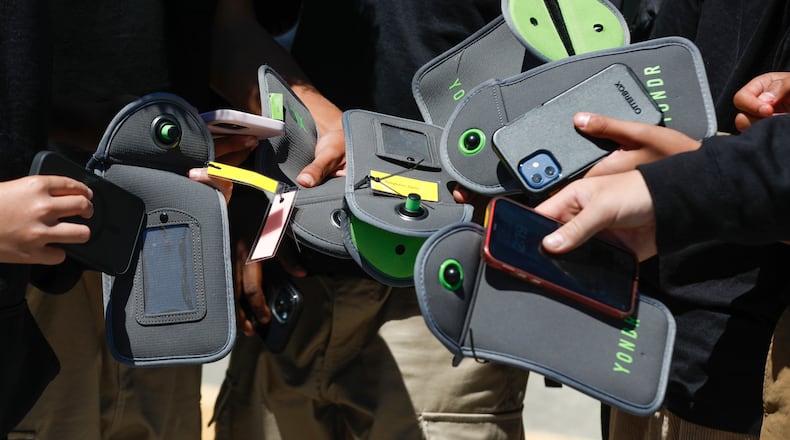Schools will have to have the policy in place by January.
A review by the Dayton Daily News of several local public school policies found many of the districts already limit or ban cell phones in the classroom, instead requiring students to turn them in to a teacher or administrator at the beginning of the day or keep them in lockers or backpacks.
“For too long, phones have been a major source of distraction in classrooms fueling disengagement, social media addiction, and even contributing to rising levels of anxiety and depression among students,” said State Senator Andrew Brenner, R-Delaware, the chair of the Senate Education committee.
He added, “By limiting their use to instructional purposes or specific accommodations, we’re helping restore focus to learning and promoting a much healthier, more productive school environment for all students.”
In May 2024, Ohio Gov. Mike DeWine signed a law requiring school districts to have a policy around personal devices in classrooms by July 2025. Many schools restricted the use of cell phones in the classroom after that, including Oakwood, Beavercreek and Kettering.
DeWine said in an April press conference that the schools who banned cell phones had noisy lunch rooms, more socialization and better communication between students and teachers.
“As we’ve looked at this and what has happened, and have seen the great, great results from the schools that have actually banned cellphones, I think the jury has really returned on this issue,” DeWine said.
A study from the Ohio Department of Education and Workforce in December 2024 found about 61% of the schools who responded to the survey had adopted formal policies around cellphones.
About 45% of the respondents said cellphone use is limited to select times of the school day and 41% said phones are not allowed at any time during standard school hours.
The survey was sent to more than 1,000 schools, including charter schools, traditional public schools, independent STEM schools and joint vocational schools. In total, 992 districts replied.
Oakwood High School class of 2026 and class of 2025 students sent the Oakwood Board of Education in May questioning the policy, calling it “well-intentioned” but “out of touch with the reality of our classroom experience.”
“Right now, this policy does not equip us for the real world; it shelters us from it,” the letter stated. “… Instead of imposing a blanket ban, I propose a more balanced approach: allow phones during non-instructional periods and do not ban them entirely from our school day. This is wholly compatible with the expectation that devices be off during class. Let teachers continue making decisions for their classrooms, as they have for so many years, and which has worked."
About the Author

